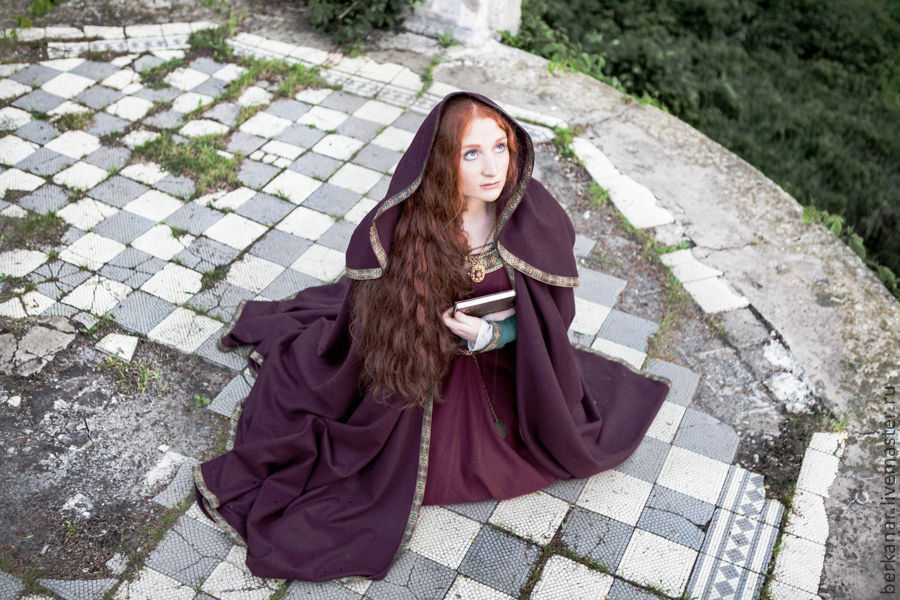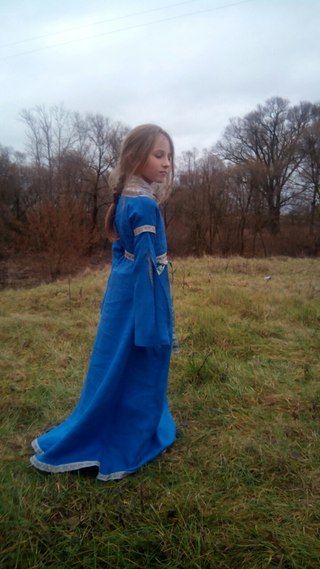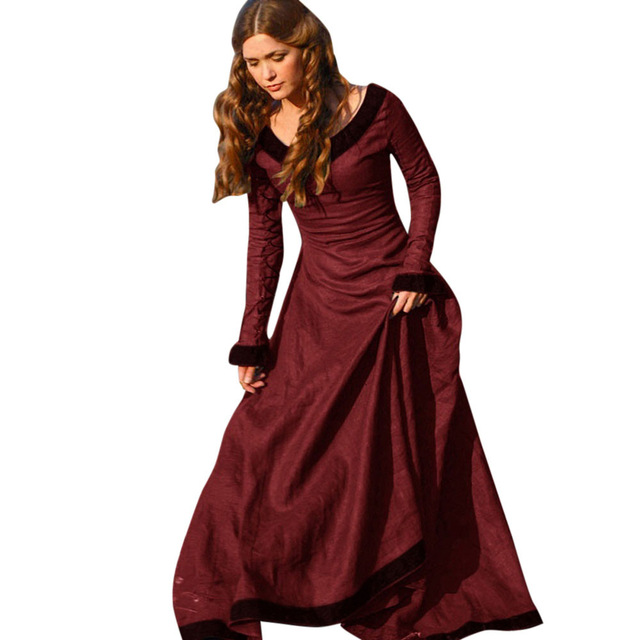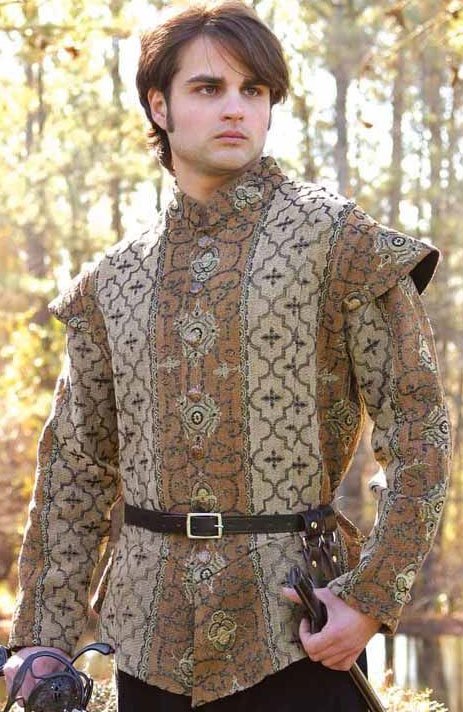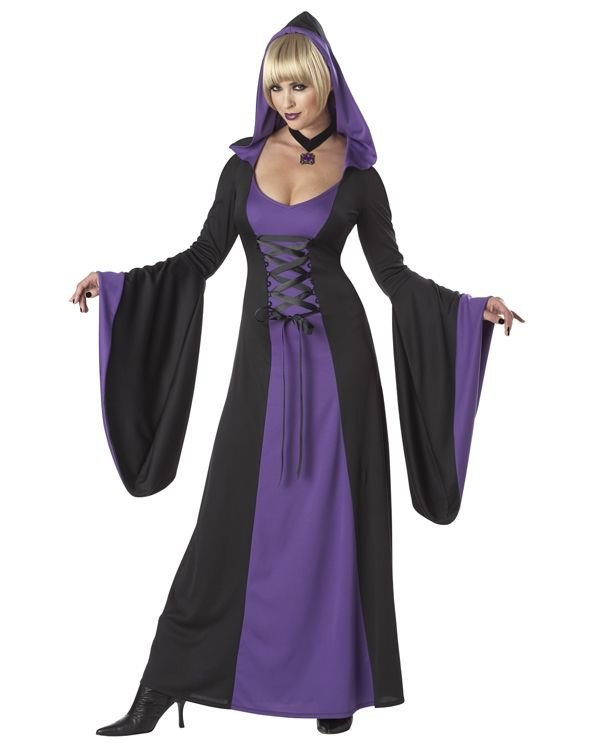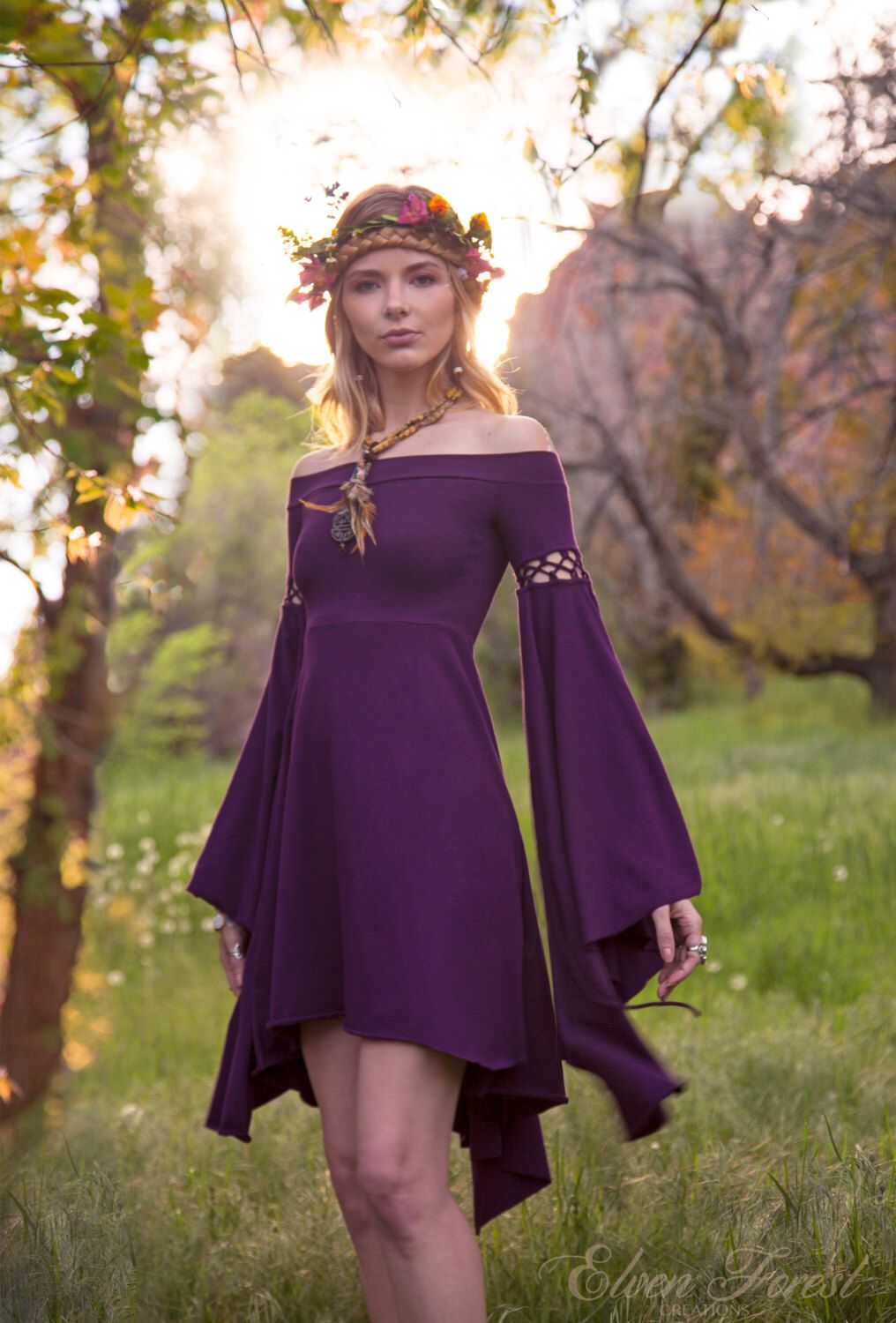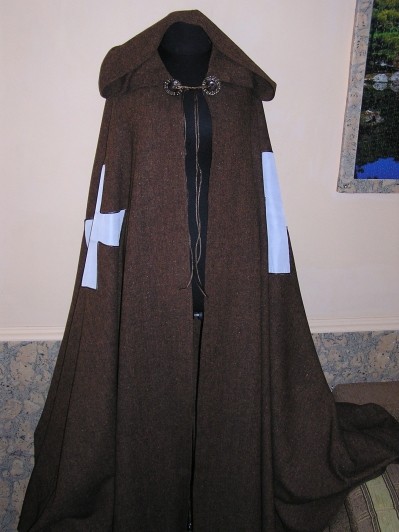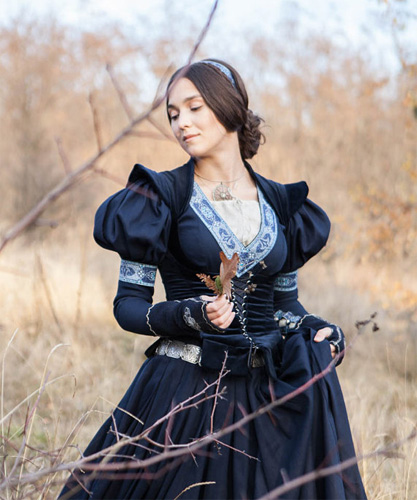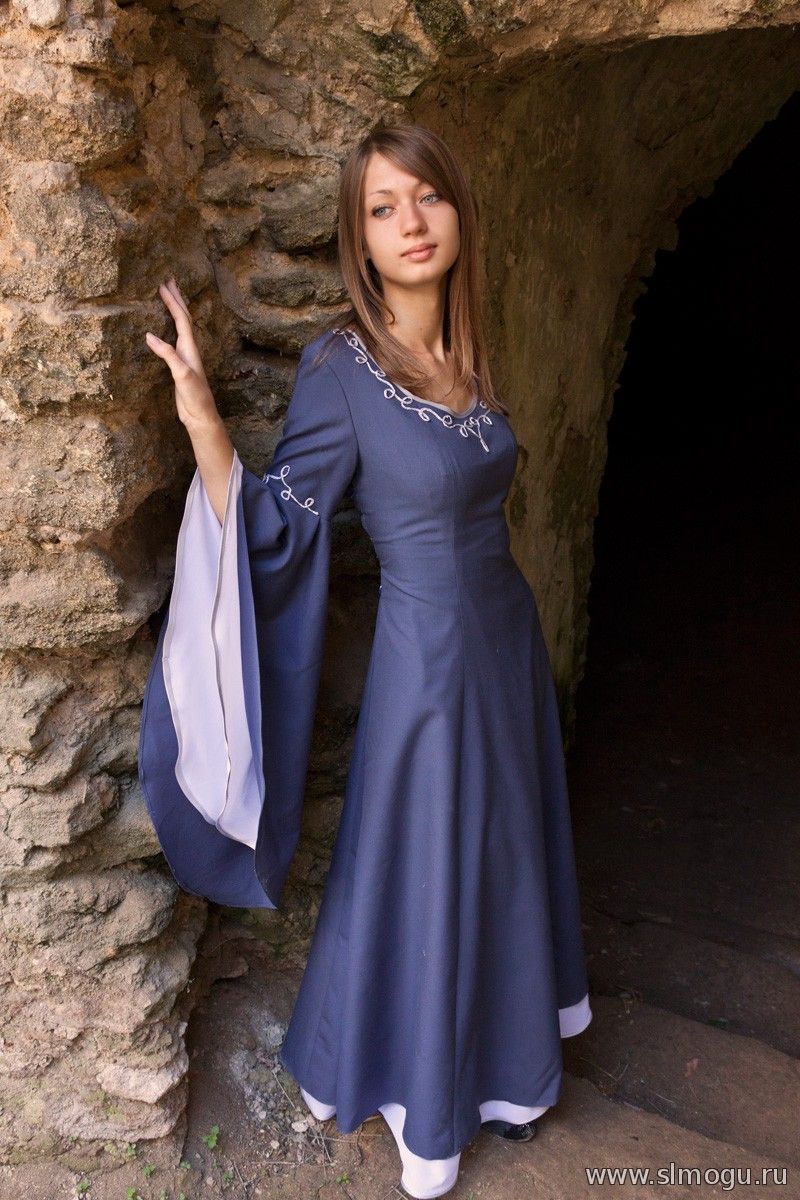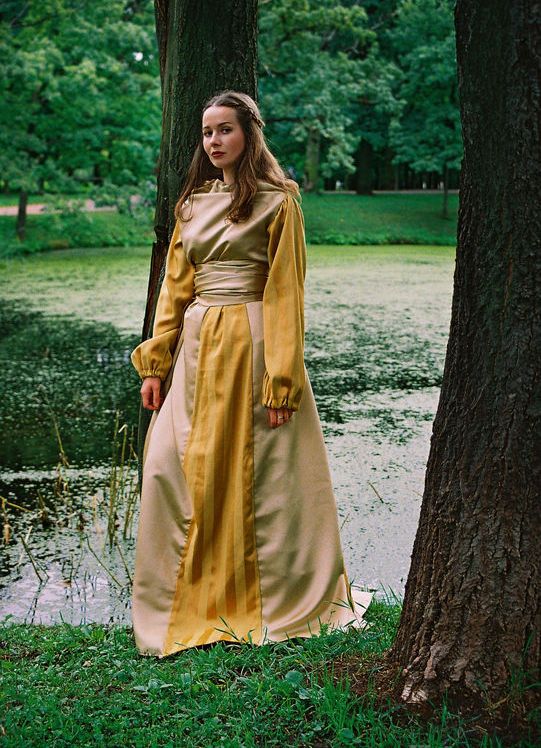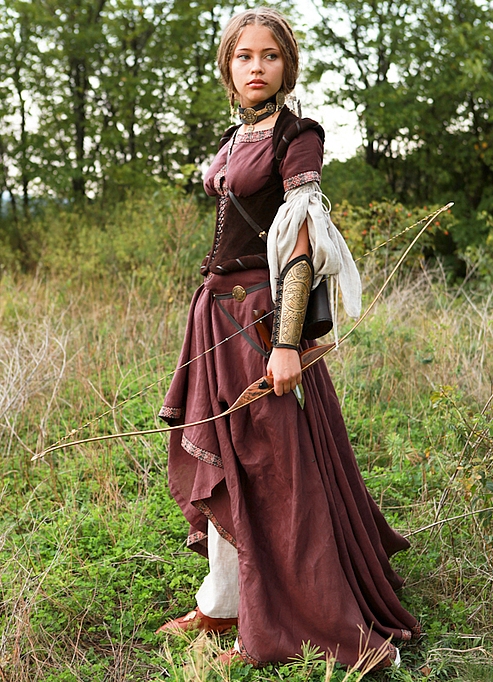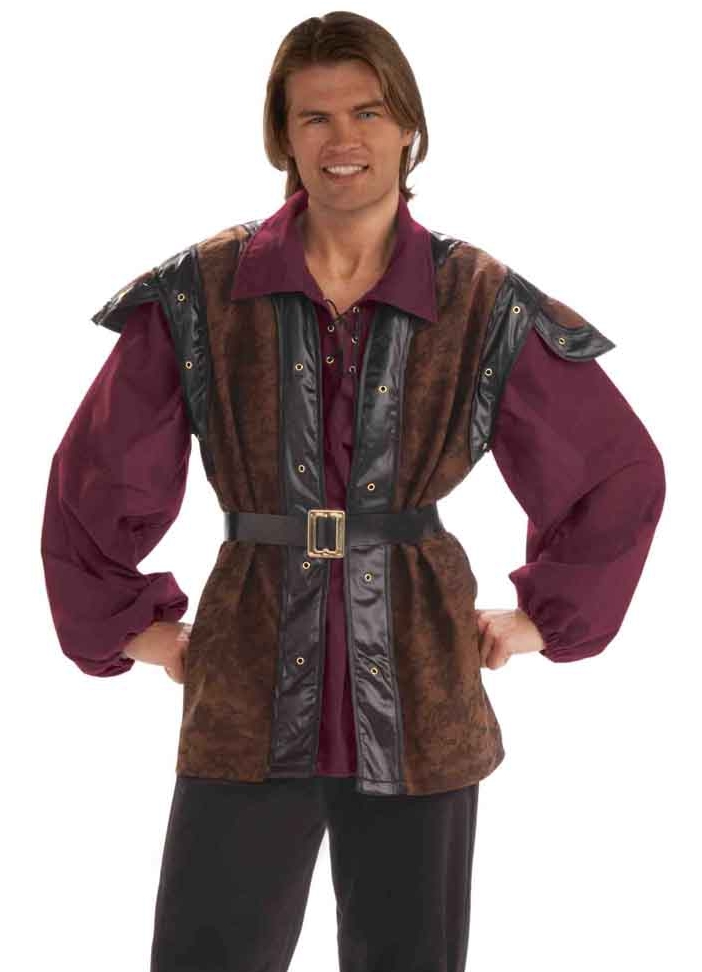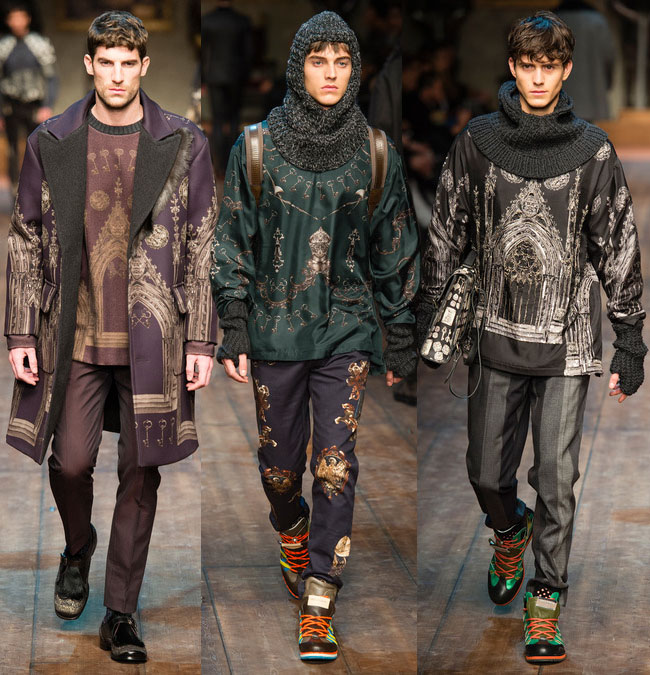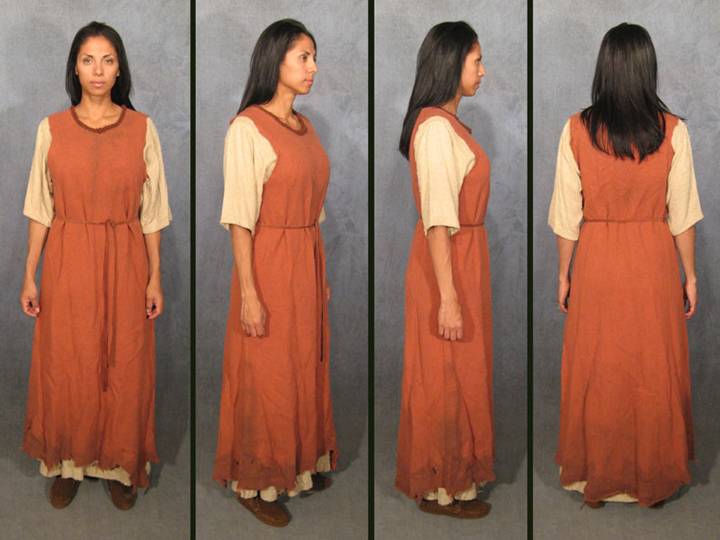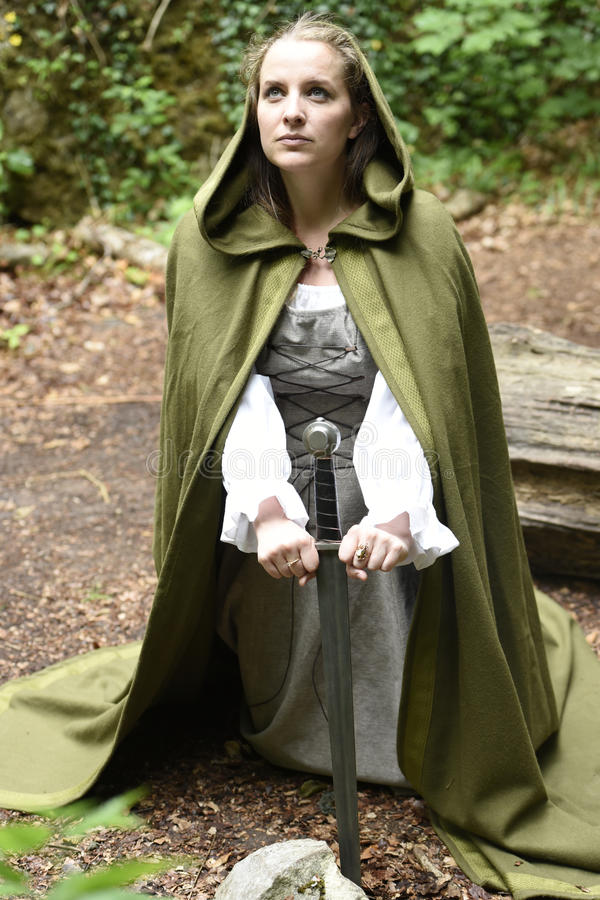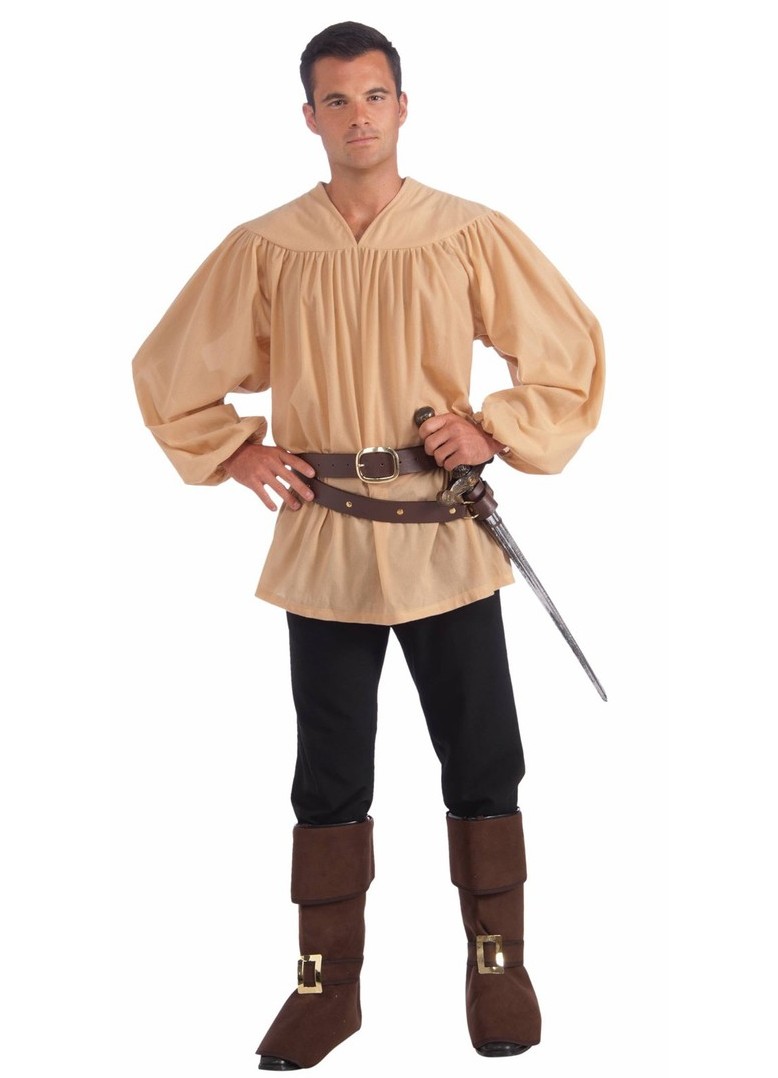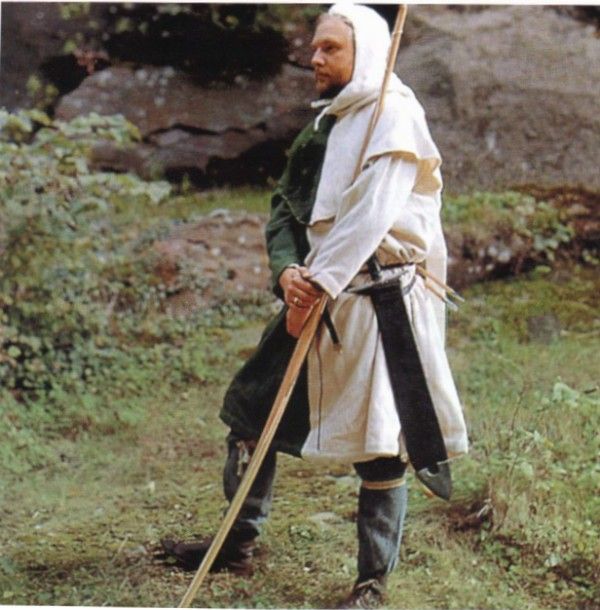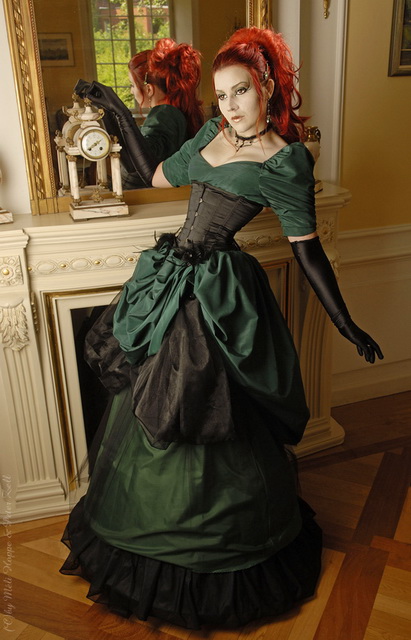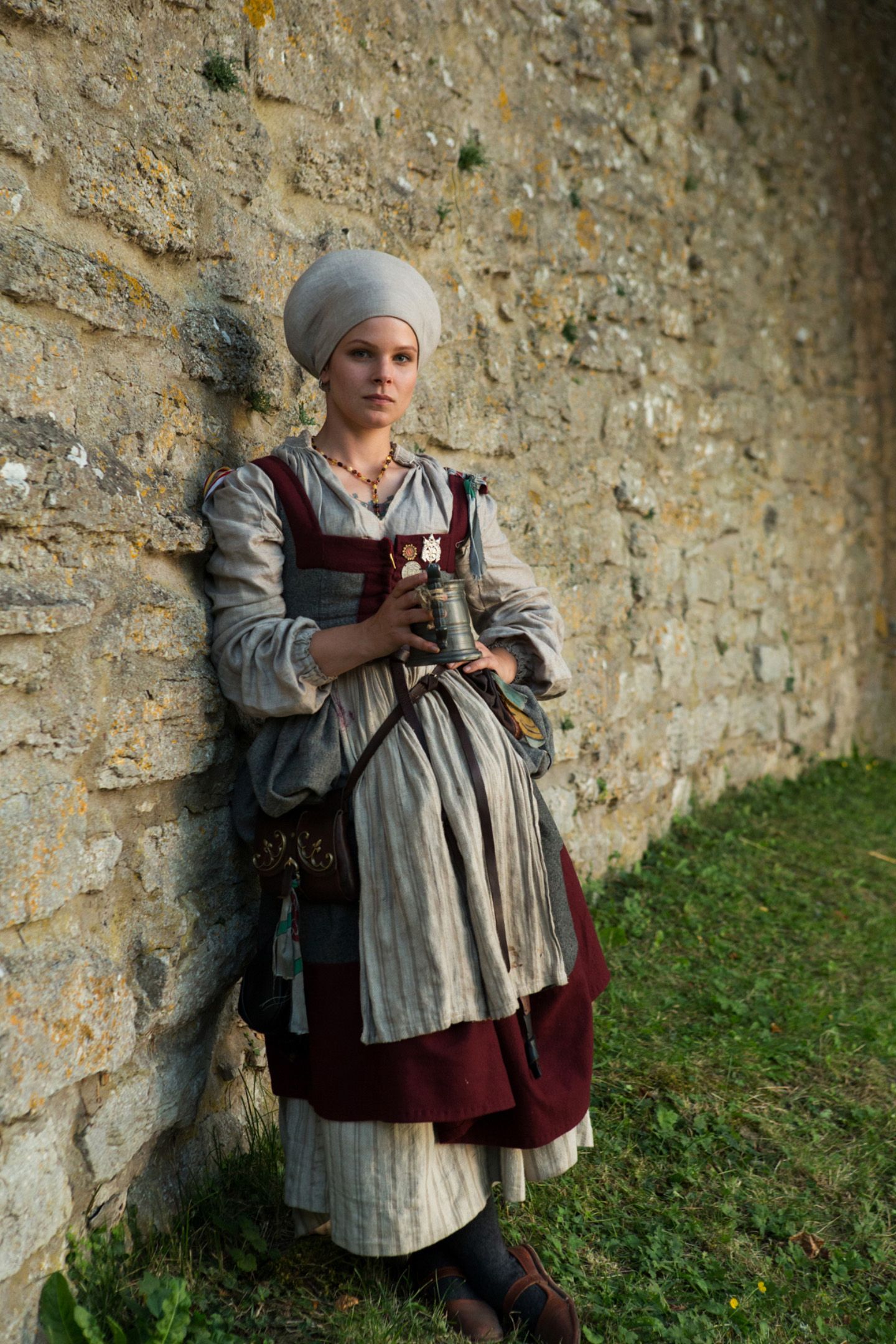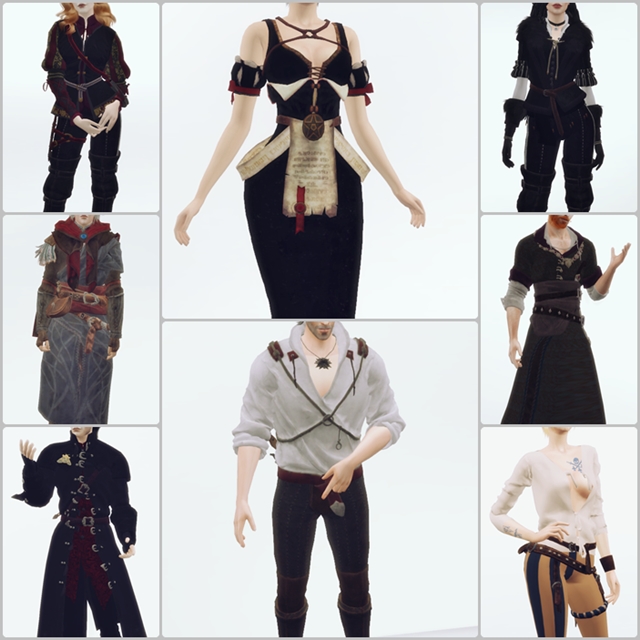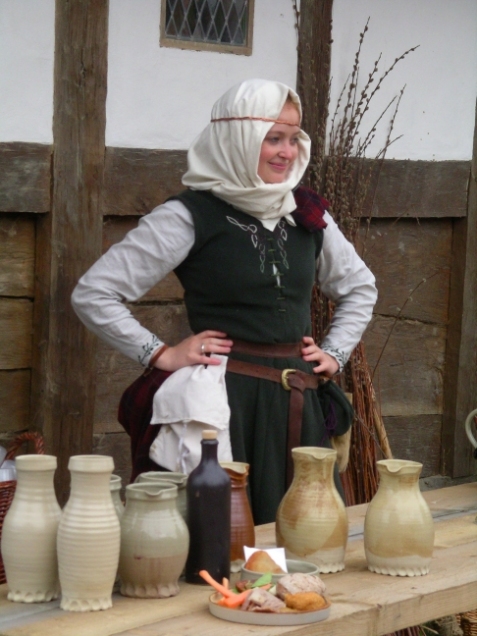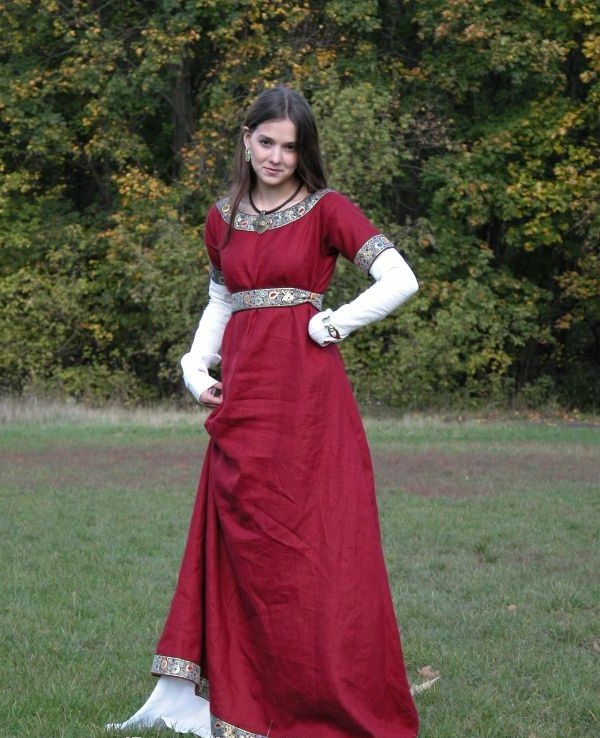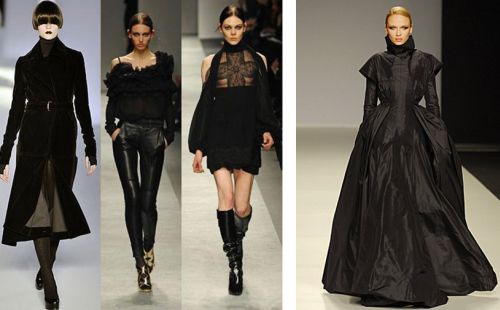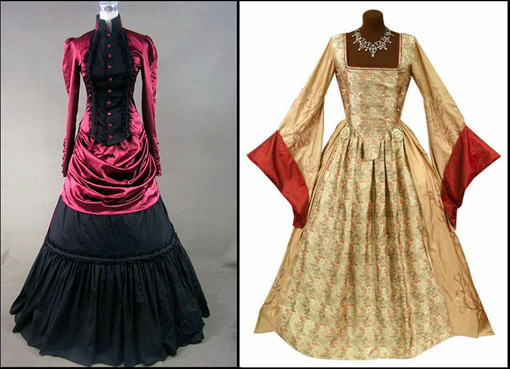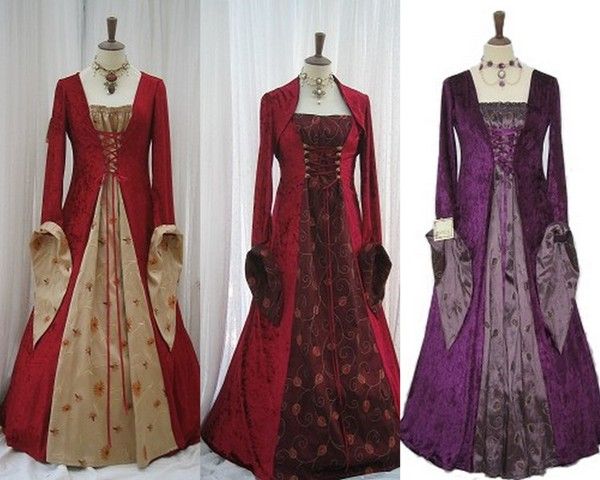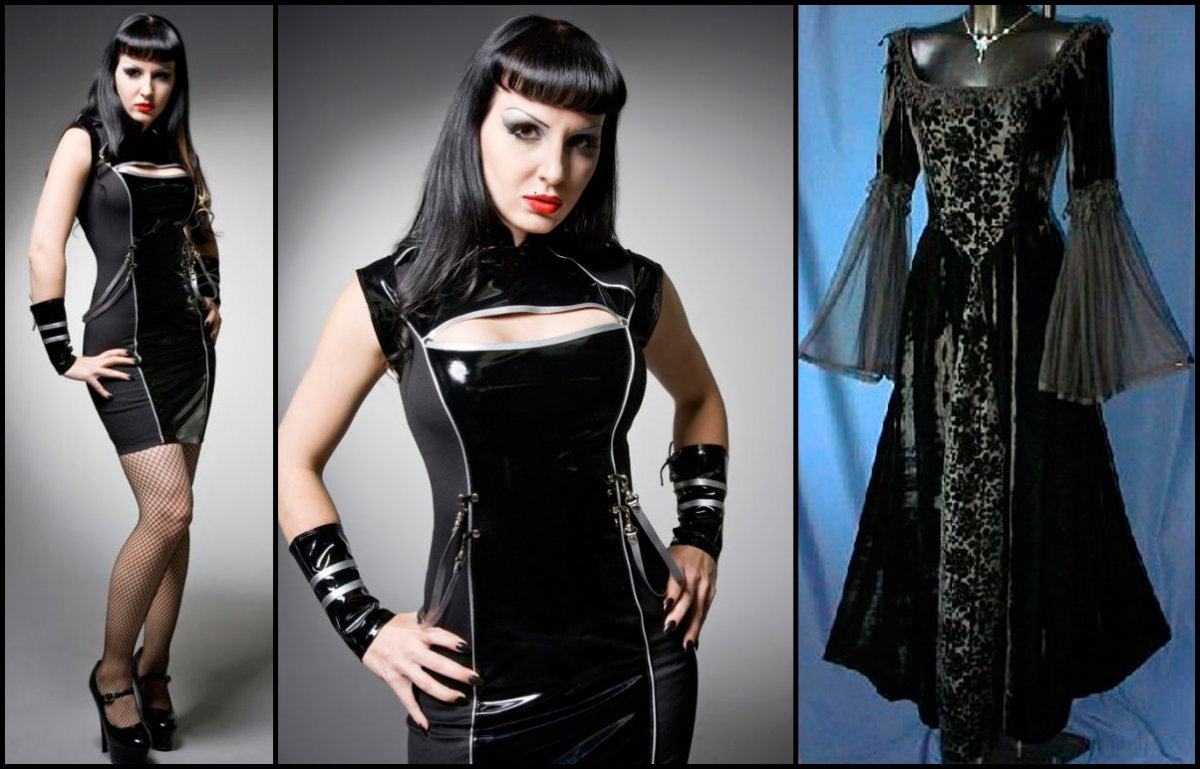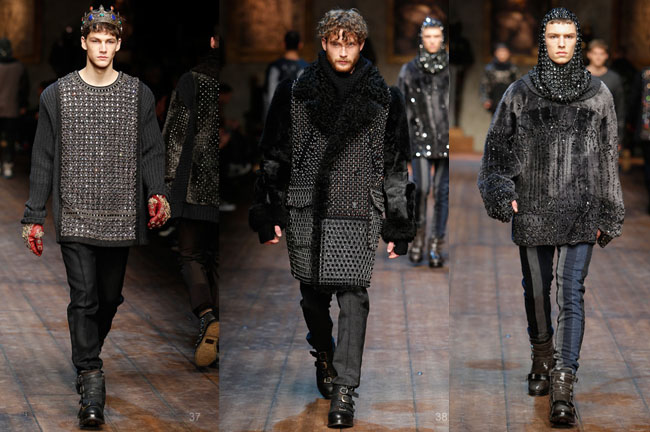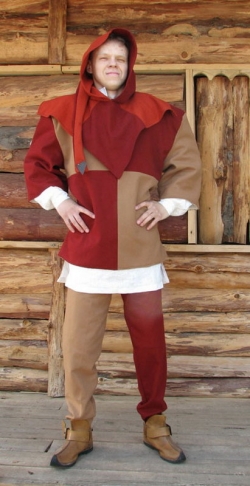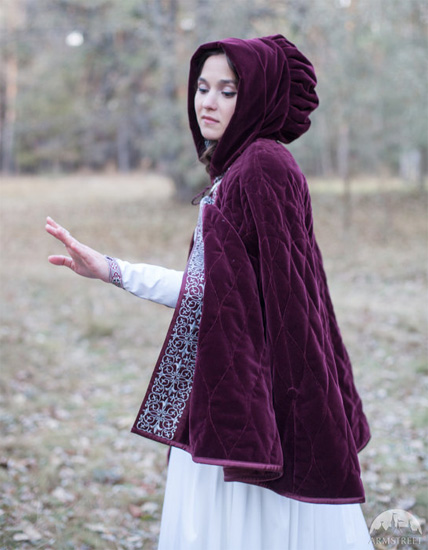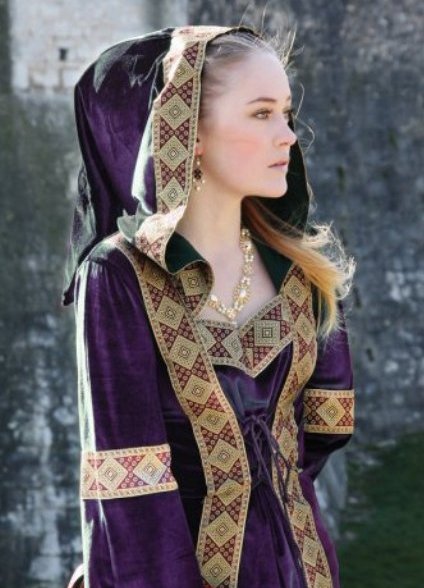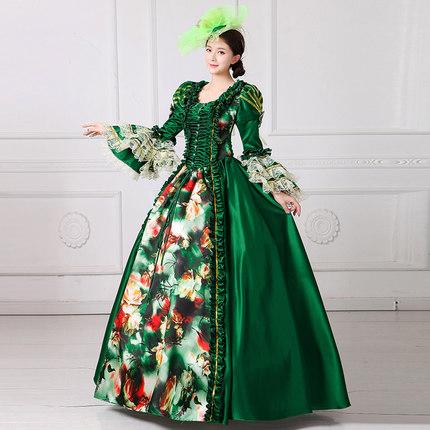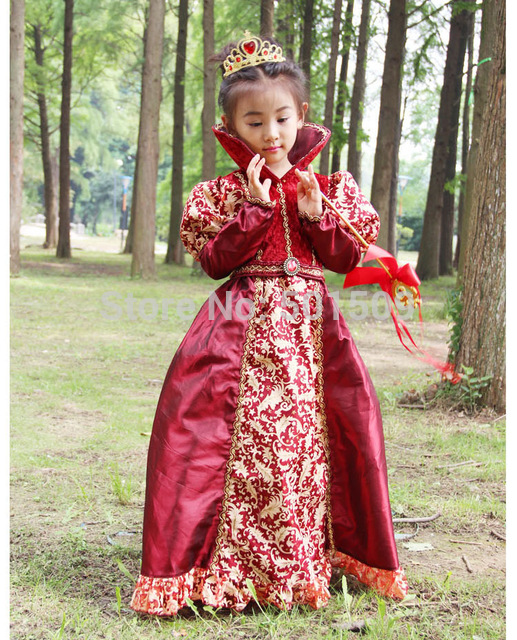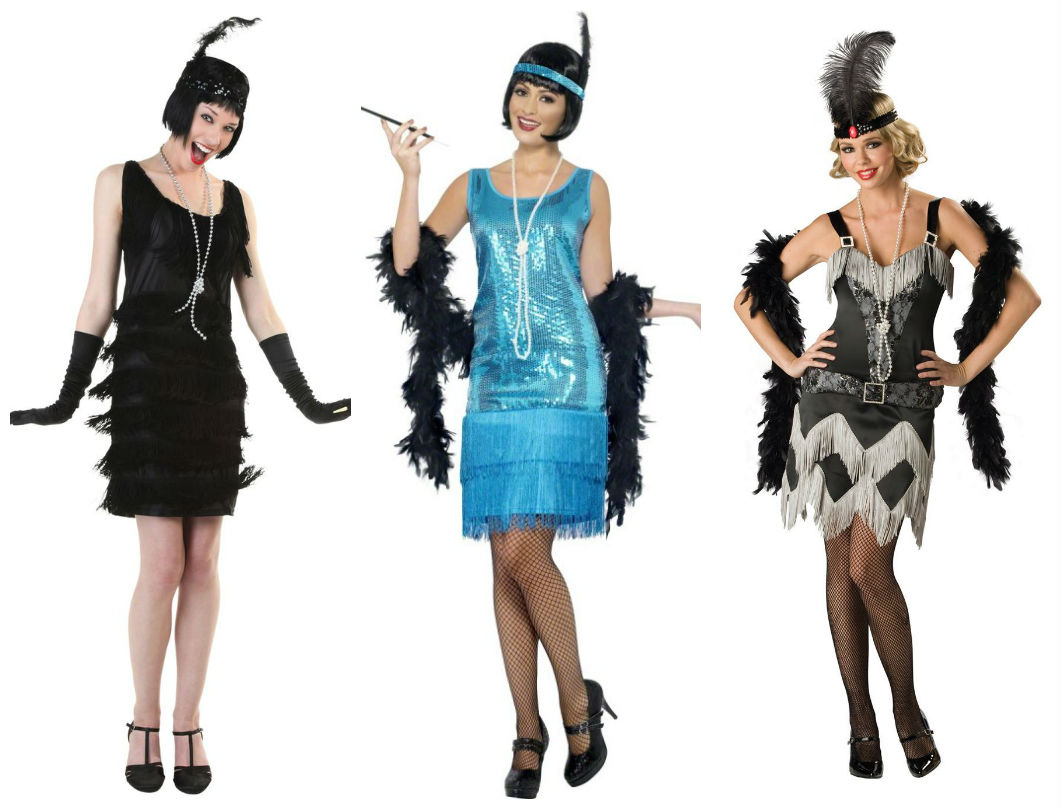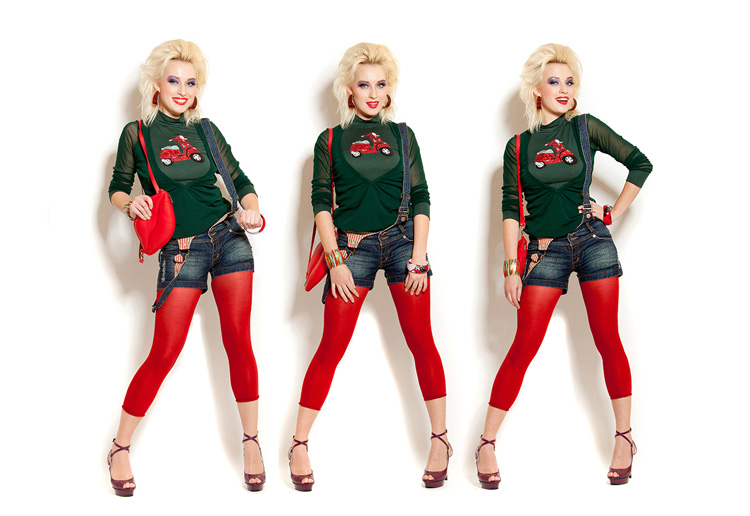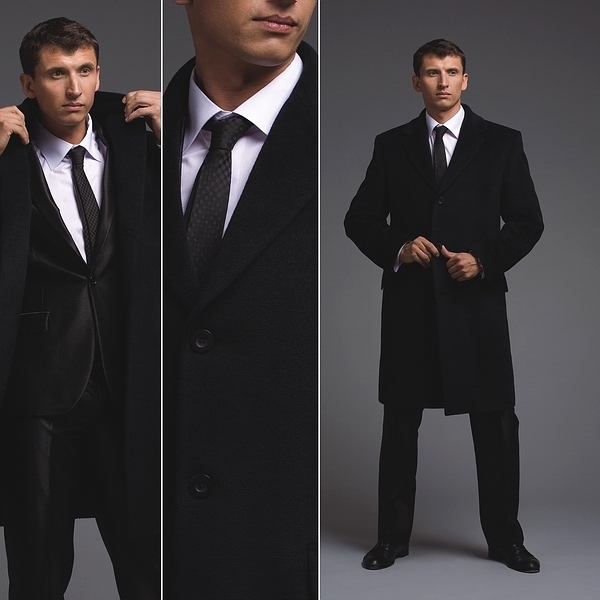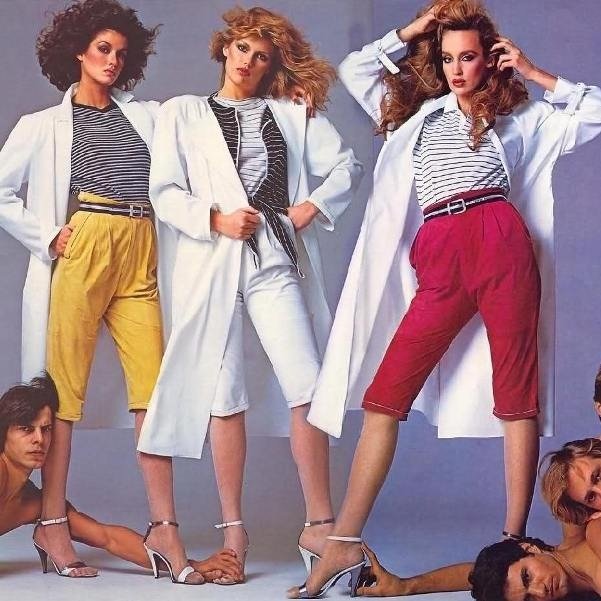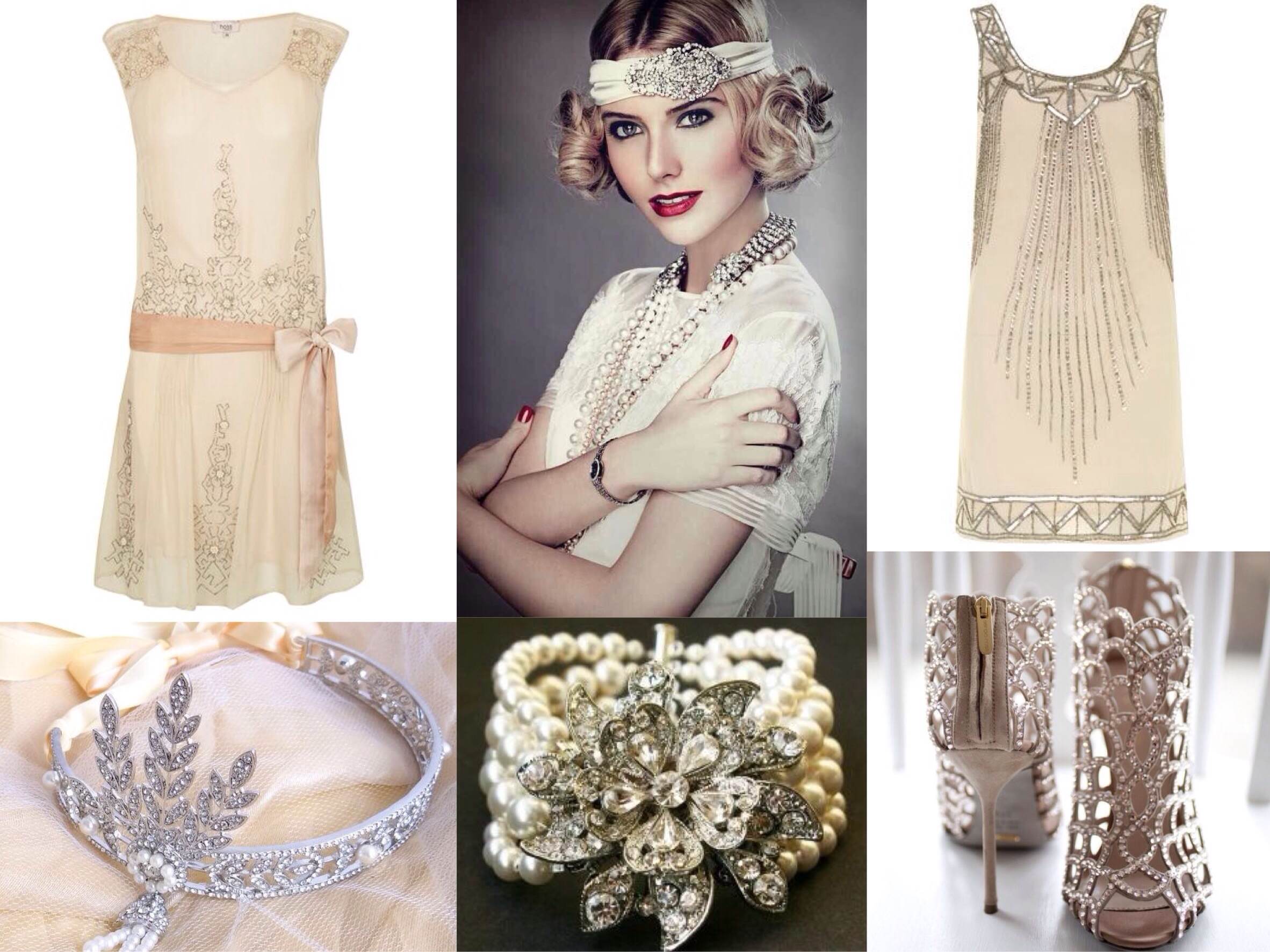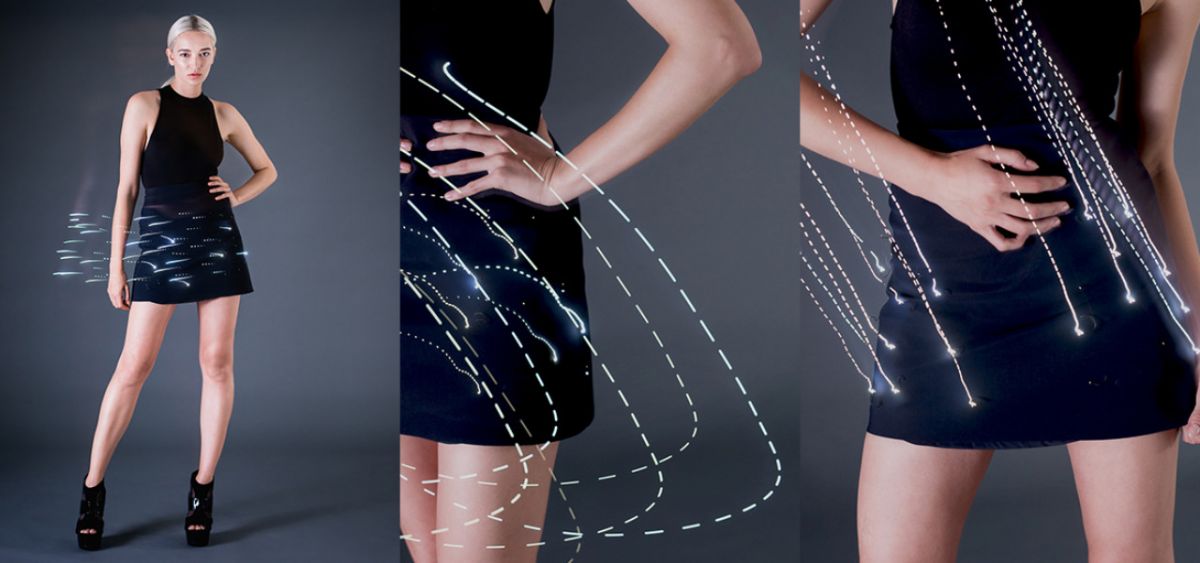The Middle Ages are steeped in the spirit of chivalry, the struggle for power, and the worship of the Beautiful Lady. Laws are issued one after another, regulating the clothes that must be worn depending on class. Farmer, aristocratic, and peasant medieval clothing differed in cut, quality, and structure of fabric, richness of trim, and accessories. Fashionable dresses and suits could only be worn by wealthy townspeople, although all strata of the population adhered to the principle of layering.
Medieval clothing
Medieval clothing corresponded to church canons that denied splendor or wealth; the entire appearance had to testify to the transience of existence. An outfit of muted shades had to hide the body as much as possible, not allowing one to doubt the wearer's piety. The formation of medieval fashion was formed not only due to the ascetic influence of religion, but also due to countless wars for territory and epidemics.
Key trends:
- Layered clothing. Devout ladies were expected to wear several layers of clothing, consisting of a long undershirt and underdress, with an overdress worn on top. All layers had long hemlines and tapered sleeves;
- Medieval clothing was decorated in different ways. Craftswomen camouflaged seams, hems, necklines or sleeves with various embroidery, tassels, lace, fur. To fasten medieval clothing, lacing, buttons, and ties were used;
- The fashion for patchwork suits. Their colors repeated the colors of the coat of arms, so one could recognize a representative of a medieval aristocratic family by their clothes;
- Simple peasants preferred grey, black and brown colours of suits, while wealthy townspeople could afford to combine several contrasting shades of red, green, yellow and blue;
- In the Middle Ages, clothing was decorated with oriental motifs. During the Crusades, the Templars brought fashion for the cut, color and patterns of clothing from the East;
- Bells were used to decorate clothes, belts, headdresses and shoes. The medieval beauty could be heard from afar, and over time they began to decorate only the costumes of buffoons;
- Lack of underwear. It was not necessary to wear it, women in the Middle Ages made do with long shirts;
- High headdresses were complemented by capes that tightly embraced the neck and head, falling in smooth folds onto the shoulders.
White material was considered too cheap in the Middle Ages, so it was rarely used in sewing clothes. A noble medieval aristocrat emphasized her beauty by combining the brightest fabrics for her dress, and used headdresses embroidered in the oriental style.
Belts, bags, and amulets served as complements to medieval clothing. Crowned persons had belts decorated with precious stones; knights wore belts indicating initiation into an order; priests were content with lacing at the waist.
Varieties
In the clothing of the early Middle Ages, straight cuts prevailed, with an emphasis on open-front garments. Up until the 11th century, there were no particular differences between women's and men's clothing; the features of medieval fashion are distinguished by periods:
- From the 12th to the beginning of the 14th century. Long, floor-length dresses that hug the figure. The bodice is sewn tightly using side seams, and the skirt is widened from the waist with special wedges. The belt has no functional load, but serves as a decorative element;
- From the second half of the 14th to the beginning of the 15th century. The rapid development of medieval architecture leads to the flourishing of the art of cutting and sewing. The period gives rise to the formation of Gothic clothing, popular among certain youth trends to this day. The male medieval costume is shortened, the female one is enriched with decorative elements. Two trends develop in parallel - to cover the body as much as possible in the name of Christian norms or to tighten the figure, showing off the advantages;
- From the second quarter of the 15th century. Franco-Burgundian fashion, which showed the grandeur of the aristocracy, came to the masses. Outfits began to be sewn tight, their tails stretched along the ground, and bulky headdresses complemented the magnificence.
Women's clothing emphasized the fragility of their owners, men's suits demonstrated wealth and status. People who did not want to wear clothes that matched their gender were excommunicated and declared heretics. Clothing in the Middle Ages embodied the owner's piety, humility before worldly burdens.
Women's
Early medieval women's clothing consisted of two tunics. If the lower one had to reach the floor and have long sleeves, then the upper one was shorter and had wide sleeves. Tunics were decorated with trim along the hem, neckline and sleeves.
The tight-fitting vest, embroidered with patterns or decorated with trim, gradually comes into fashion. The belt serves as decoration, it is worn on the hips, decorated with metal plates.
A bliot or a floor-length dress with tapered sleeves has lacing on the sides. As outerwear, a woman wore a long cloak with a fabric or fur lining. In the late Middle Ages, clothing became more layered. The silhouette remained tight-fitting up to the waist, but gradually widened towards the bottom. In addition to tunics, a camisole, cott, cloak, and surcoat appeared in a woman's wardrobe.
If tunics and camisoles serve as underwear, then the kott is worn on top. The waistline of the surcoat is accentuated under the chest, and the skirt is complemented at the back with a train reaching several meters in length. A pillow was attached to the stomach under the dress to simulate pregnancy. The décolleté area is covered with an insert of lace or transparent material.
Headdresses included velvet or brocade "sugar loafs", hennes, genins, horned caps. The higher the lady's origin, the higher the headdress she wore. In the Middle Ages, girls loved to wear a huge amount of jewelry. The image of a beautiful lady is unthinkable without rings, necklaces, chains, embroidered handkerchiefs. Rosaries, amulets, a mirror, gilded toothpicks were attached to the belt.
Male
In medieval costume, men's clothing involved wearing two tunics. A long tunic, a kamiza, made of simple fabric, was worn close to the body, and a richly decorated short tunic, a kott, was worn on top. Over time, tunics for nobles became long, while the lower and upper clothing of medieval peasants remained shortened.
Men also had bliauds in their wardrobe. These loose garments had side slits and were belted at the waist. There were also bliauds without a belt, but with a loose skirt and a defined waist. The ancestors of shorts were bre, that is, a simple material wrapped around the hips. Later, this element of the wardrobe began to be sewn to the knees, equipped with ties or lacing at the bottom. Chausses or stockings made of thick material were tied to the bre or to the knees with belts.
The men's outerwear consisted of surcoats, capes and mantles. Surcoats were a piece of cloth not sewn at the sides, but with a hole made for the head. Medieval cloaks reached the floor and were attached with a fibula to the chest or shoulder. Aristocrats wore mantles made of expensive material, trimmed with jewelry and fur. In the Middle Ages, knightly attire consisted of a "heraldic" suit, which included one of the lady's colors.
Differences for the poor and the rich
There were no class differences in the cut and style of clothing. The cut in the Middle Ages was the simplest, pieces of fabric could be connected with lacing, and appliqué elements of the costume could be used. The differences concerned only the cost of the fabric, the quality of the trim and embroidery. Even a rich peasant could not go against the rules to wear clothes made of fabric not for his class. Velvet, brocade and fur were considered a privilege of the upper classes.
In the Middle Ages, laws against luxury were developed, dividing types of clothing by rank. All excesses were considered a sin, so dressing in expensive clothes was considered a crime. Even the color of peasants' clothes was attributed to gray or brown, but the rich wore suits of all the colors of the rainbow. Black in the Middle Ages indicated grief, white meant faith, and blue meant sensitivity.
What did they wear in Europe?
The Netherlands became the trendsetters of Medieval European clothing, spreading the Gothic trend to Italy, Germany and France. It was in France, with the help of the Burgundian court, that innovations in clothing for fashionistas began. Seamstresses shortened tunics, divided them into luxurious skirts and tightening bodices, skillfully emphasizing the thin waist and stretching the silhouette.
Fashion delights of Europe:
- "Devil's windows" - ladies of the Middle Ages wore a figure-shaping dress on the bottom, and another one on top - with a low neckline and without sleeves. The clergy opposed this fashion, calling for changing to more restrained, closed clothing;
- The length of the train was becoming longer and longer, and it was even necessary to establish its optimal length. In Italy, a stone was installed in one of the squares, next to which a warrior with a sword stood to control the length of the train;
- Medieval clothing began to abound with deep necklines. The neckline sank lower and lower, and followers of fashion fell into disfavor with the church;
- Sleeves now became an integral part of the dress, if a little earlier they were unfastened or fastened with ties. Their length was also significant, sometimes they were sewn like a muff;
- Tall hats - during the Middle Ages, the church considered such headdresses to be a refuge for demonic forces, but they managed to achieve the optimal height of the hat for aristocrats up to 1 meter, and for ordinary city women - 50 cm;
- Pointed shoes were also considered "the claws of the devil." They were too uncomfortable to walk in, but for the sake of beauty, ladies were ready to endure the torment.
The holes in medieval clothing were fastened with lacing, pins, and needles. It was not clear to the uninitiated where the sharp fastening elements were hidden in the multi-layered dress. The gentlemen only sighed on the sidelines, complaining that the beautiful lady resembled a rose with sharp thorns.
In Medieval Europe, the production of high-quality fabrics was established. From Italy, merchants exported the best brocade, velvet or silk fabrics for sewing clothes. Craftswomen in Flanders wove the finest cloth, which they decorated with purple. Flemish craftsmen gave the world famous lace, striking in its airy structure.
What was the ideal of beauty?
The images of medieval saints are judged by church ideas. Almost weightless figures of martyrs, filled with sorrow, hover under the domes of churches. The ideal of beauty was considered to be a girl repeating the face of the Virgin Mary:
- elongated face;
- neat plump lips;
- too high forehead;
- big eyes.
Artists paint slender girls with protruding bellies on their canvases, the line of the chest and hips is poorly defined. Any roundness of the body was considered vulgar, indicating the low origin of the girl. In the Middle Ages, the bodice of clothing was tightly laced, and in Spain, lead pads were used to restrain the growth of breasts. Eyes without eyelashes and shaved foreheads were in fashion, so women used folk recipes for removing body hair.
Any freckles or moles were considered devil's marks, they had to be regularly rubbed with amethyst to remove them. The lady of the Middle Ages personified meekness, created the appearance of an unearthly creature. The maiden must certainly have green or blue eyes, and the ideal picture of the Middle Ages was complemented by golden hair flowing to the floor. The clothes of a medieval knight, on the contrary, emphasized masculinity. The ideal was considered to be a man with a strong physique and clearly defined facial features.
During the Middle Ages, the rose became the ideal flower. Amidst the greyness and civil strife, roses were presented to lovers, woven into wreaths, petals were showered on newlyweds, and clothes were decorated with embroidery featuring woven roses.
Models for modern times
Representatives of the Gothic subculture adopted the main trends of medieval attire, although they are distinguished by their pretentiousness and sophistication of forms. The attire of Goth women and men is permeated with the idea of hopelessness, mortal melancholy.
A combination of medieval clothing styles adapted to modern times:
- highlighted décolleté area;
- lace dresses of any length and volume;
- figure-hugging trousers;
- corsets on a blouse or naked body, emphasizing the curves of the owner;
- cropped jacket paired with a pencil skirt;
- abundance of lace inserts, lacing or mesh;
- many leather clothing items – jackets, skirts, dresses;
- black T-shirts and tank tops with attributes in the form of bones, spiders, birds;
- voluminous raincoats with hoods;
- rough boots or shoes with an impressive platform.
Designers often experiment with medieval clothing, adapting it to modern Gothic style. Fashion houses suggest wearing sweaters reminiscent of knightly chainmail; images of basilicas, cathedrals or kings' faces on coats and suits are also popular. Dark fabrics combined with acid shades, an abundance of flounces and lace, and eye-catching makeup will create a medieval style of clothing.
The culture of the Middle Ages is evidenced by majestic ancient cathedrals, chronicles of historians, sculptures and miniatures. The formation of modern costume is unthinkable without a turning point in history, rejecting prim foundations in clothing in front of European fashion. The rejection of medieval asceticism in favor of more revealing outfits became a stage of rebellion, testified to the desire of man for comfortable and convenient clothing.
Video

